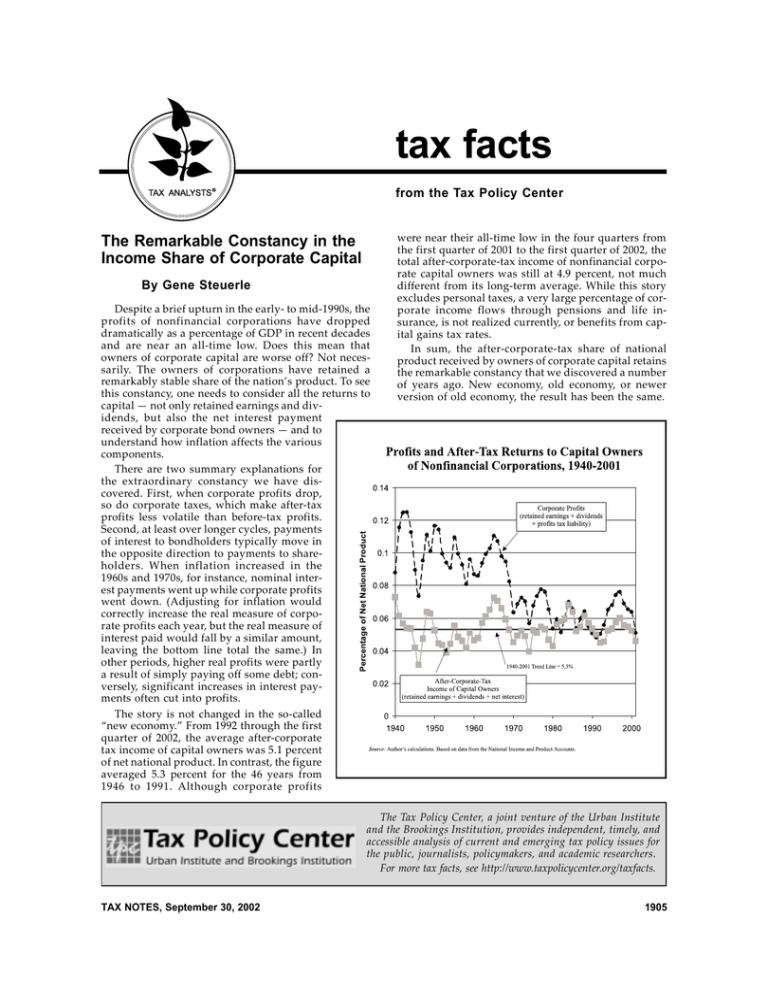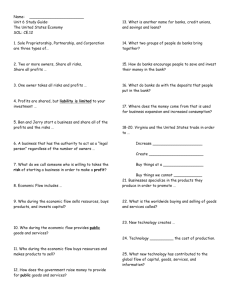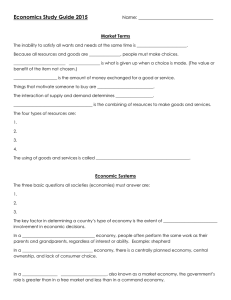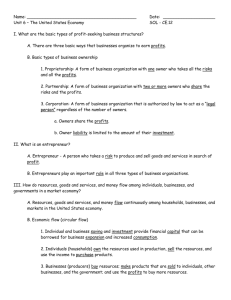tax facts The Remarkable Constancy in the from the Tax Policy Center
advertisement

tax facts from the Tax Policy Center TAX ANALYSTS ® The Remarkable Constancy in the Income Share of Corporate Capital By Gene Steuerle Despite a brief upturn in the early- to mid-1990s, the profits of nonfinancial corporations have dropped dramatically as a percentage of GDP in recent decades and are near an all-time low. Does this mean that owners of corporate capital are worse off? Not necessarily. The owners of corporations have retained a remarkably stable share of the nation’s product. To see this constancy, one needs to consider all the returns to capital — not only retained earnings and dividends, but also the net interest payment received by corporate bond owners — and to understand how inflation affects the various components. There are two summary explanations for the extraordinary constancy we have discovered. First, when corporate profits drop, so do corporate taxes, which make after-tax profits less volatile than before-tax profits. Second, at least over longer cycles, payments of interest to bondholders typically move in the opposite direction to payments to shareholders. When inflation increased in the 1960s and 1970s, for instance, nominal interest payments went up while corporate profits went down. (Adjusting for inflation would correctly increase the real measure of corporate profits each year, but the real measure of interest paid would fall by a similar amount, leaving the bottom line total the same.) In other periods, higher real profits were partly a result of simply paying off some debt; conversely, significant increases in interest payments often cut into profits. The story is not changed in the so-called “new economy.” From 1992 through the first quarter of 2002, the average after-corporate tax income of capital owners was 5.1 percent of net national product. In contrast, the figure averaged 5.3 percent for the 46 years from 1946 to 1991. Although corporate profits were near their all-time low in the four quarters from the first quarter of 2001 to the first quarter of 2002, the total after-corporate-tax income of nonfinancial corporate capital owners was still at 4.9 percent, not much different from its long-term average. While this story excludes personal taxes, a very large percentage of corporate income flows through pensions and life insurance, is not realized currently, or benefits from capital gains tax rates. In sum, the after-corporate-tax share of national product received by owners of corporate capital retains the remarkable constancy that we discovered a number of years ago. New economy, old economy, or newer version of old economy, the result has been the same. The Tax Policy Center, a joint venture of the Urban Institute and the Brookings Institution, provides independent, timely, and accessible analysis of current and emerging tax policy issues for the public, journalists, policymakers, and academic researchers. For more tax facts, see http://www.taxpolicycenter.org/taxfacts. TAX NOTES, September 30, 2002 1905




